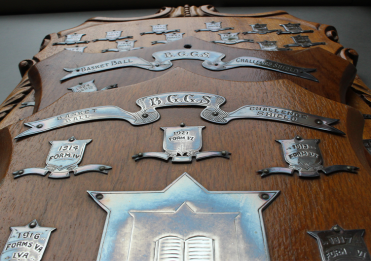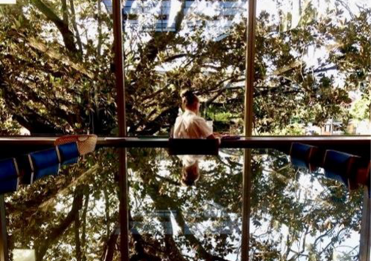Education and ways of learning change and develop over the years and it is fascinating to examine two precious artefacts that provide a window into what lasts and what changes. The School archive holds two precious Science notebooks: Beatrice Monteath’s drawing book (1915) and Christine Jones’s excursion book (1969). What makes these two books distinctive is that they provide windows into the actual work completed by our Grammar girls over 50 years apart. We simply do not have enough examples of everyday classwork which, it might be argued, is the place where our culture and heritage happens.
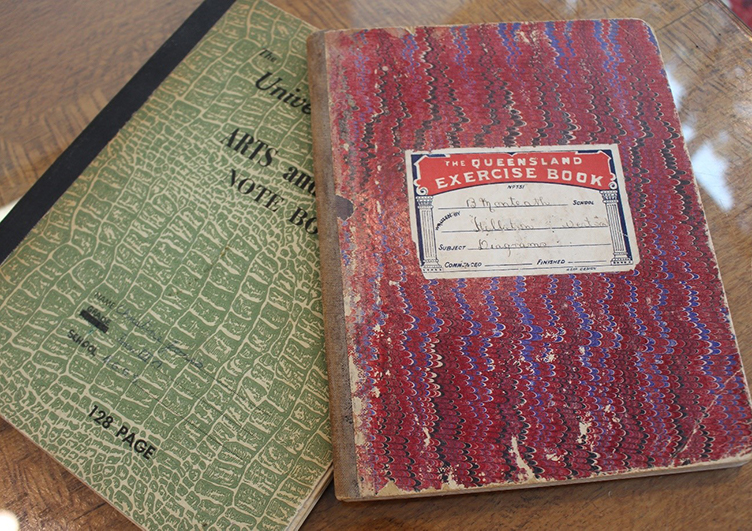
Christine Jones’s 1969, and Beatrice Monteath’s 1915, exercise books
Beatrice Monteath was born in 1899 and moved from Melbourne to Brisbane in 1912. She attended Grammar from 1913 to 1914, during which time she would have studied physiology as part of the (then) new Science course. It appears that she completed the drawings we see in her ‘Diagrams’ book, in 1915, just after leaving BGGS. The detail in these drawings is amazing and somewhat reminiscent of anatomical drawings made by Leonardo da Vinci. Some of the diagrams would have been copied (from unknown sources) and some appear to be Beatrice’s original work, for example from observations of specimens such as the web of a frog’s foot under a microscope. In 1915 it was considered the ‘norm’ to produce such fine, detailed drawings.
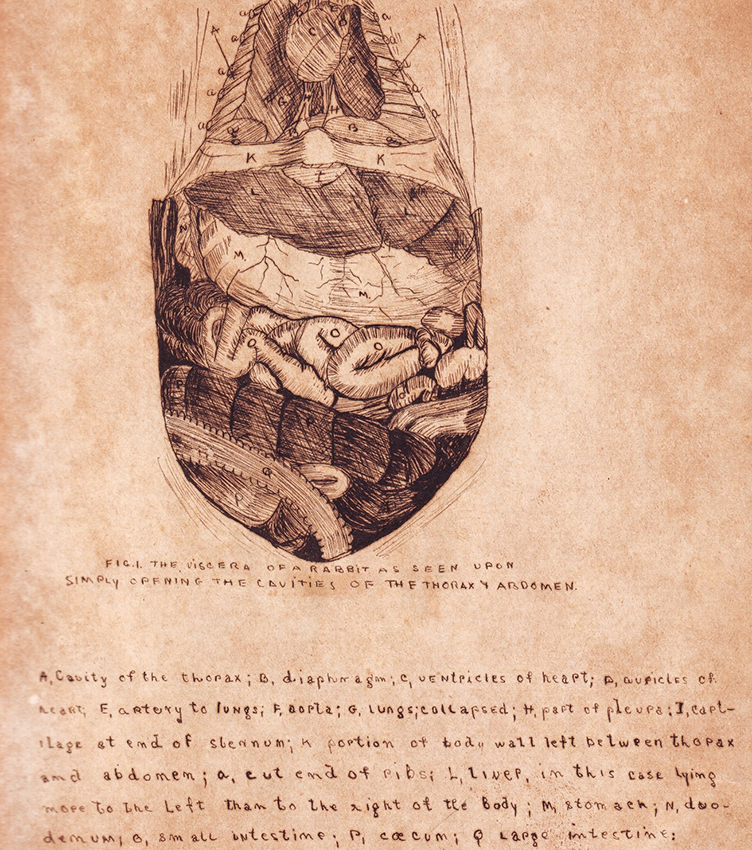
Beatrice Monteath’s detailed 1915 work
I was born in 1956 and attended BGGS from 1969-to 1972. My exercise book contains records of various Science excursions I attended as an integral part of my Year 9 Science course. One of these excursions was to Point Cartwright to study a rocky shore ecosystem, and it is interesting to note that our current Year 11 Biology students still go to Point Cartwright as part of their mandatory fieldwork. I was delighted when I showed my current Year 11 class the diagram of the rock platform I had drawn so many years ago, and they actually recognised it!
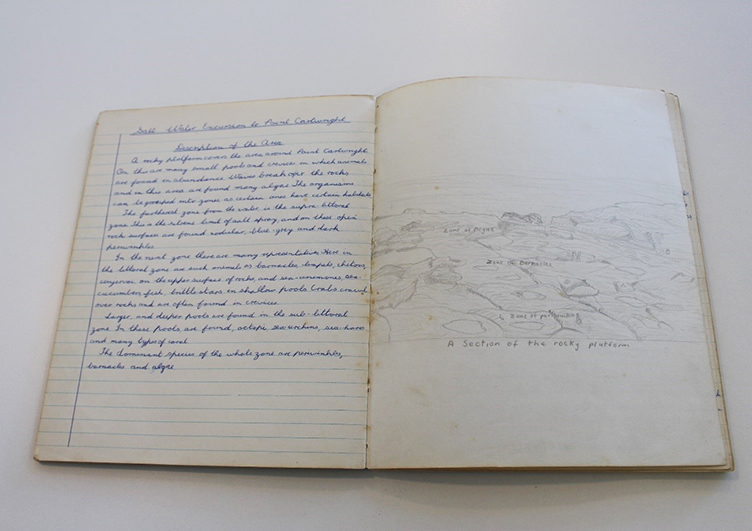
1969 Christine Jones’s depiction of the rocky platform, Pt Cartwright
In these days before laptops, iPads, and mobile phones, it was a curriculum requirement that each excursion was documented by using written descriptions and hand-drawn diagrams. These reports were marked by your Science teacher. My teacher at this time was Mrs Vim Sharma, who instilled in me the love of Biology. Vim Sharma was later to be a colleague and mentor when I returned to Girls Grammar as a Science teacher in 1983.
Much time and effort went into producing the work presented in my exercise book. As with Beatrice’s work, some of the diagrams were copied from Outdoor Studies on Living Animals in Queensland by William Stephenson, which was a standard reference in the 1960s and 70s, and some are original. While students studying Science today are still required to make a record of excursions, they are of far less depth and detail than displayed in these books. Most teachers also wonder if a photograph with a typed caption teaches the students the comprehensive understanding provided by a meticulous and detailed drawing.
What comes to a teacher’s mind in 2022 is that this very activity of slow and careful drawing, and indeed handwriting observations, are the very activities that mindfulness promotes. Not only is this approach validated by research and applied in our school setting, but it also gives the student the time to absorb and store the information meaningfully. Even though technology offers new ways of communicating knowledge between teacher and student, personal notebooks are still used in the Science classroom.
From another historical point of view, it is interesting to acknowledge the similarities between the two exercise books (even down to the covers!). Given that there is a 54-year gap between these two exercise books (1915-1969), it would be worth archiving an exercise book from a 2023 student, 54 years on again. I expect that there would be far fewer similarities since hand-drawn diagrams have been replaced with digital photographs and information readily available on the internet.
There is much to say about the comparison between 1915/1969/2023. We need to consider what is lost and what is gained. Hand-drawing offers the student the opportunity to ‘be in the moment’ versus a quick grab of an illustration on the net or snap on their mobile phone. However, perhaps this documentation of the importance of these artefacts might illuminate the value of hand-mind connectivity and, thus, encourage teachers to provide opportunities for students to create their own artistic and scholarly illustrations. The sense of accomplishment of producing a beautiful, detailed rendition of a plant or creature and the understanding and learning that comes with the intricacies of the drawing cannot be underestimated.
Mrs Christine Woodford (Jones; 1972)
Science teacher
GECO and Grammar Goes Green Coordinator
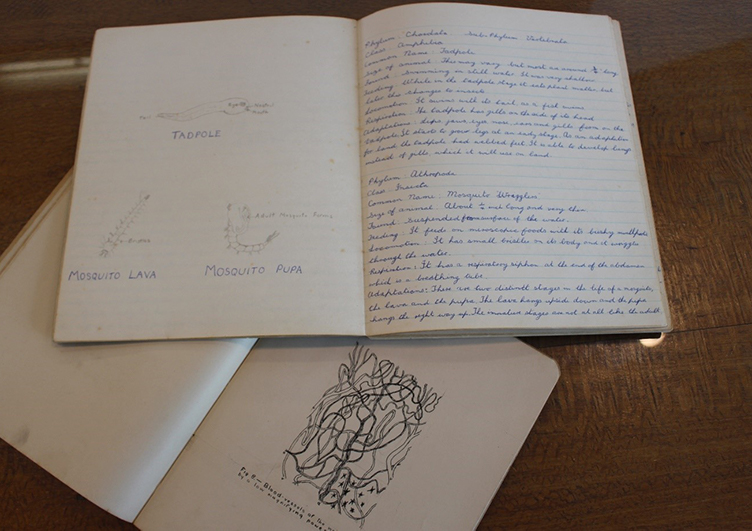
Beatrice Monteath’s frog foot drawing with Christine Jones’s tadpole drawing
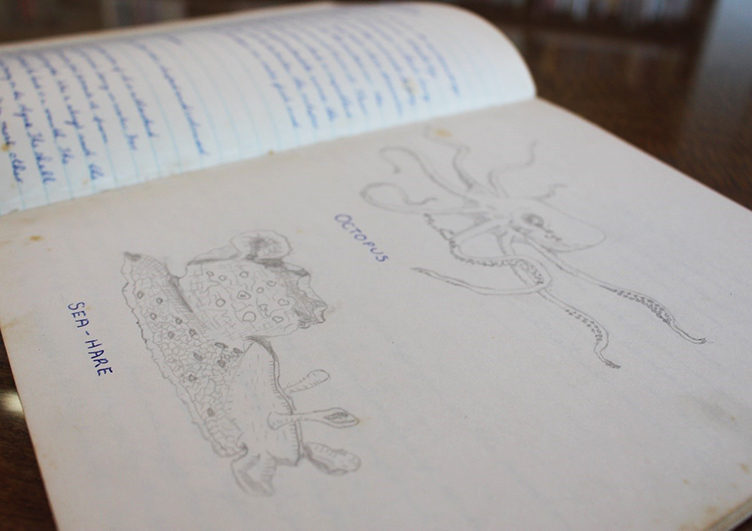
Christine Jones’s drawings
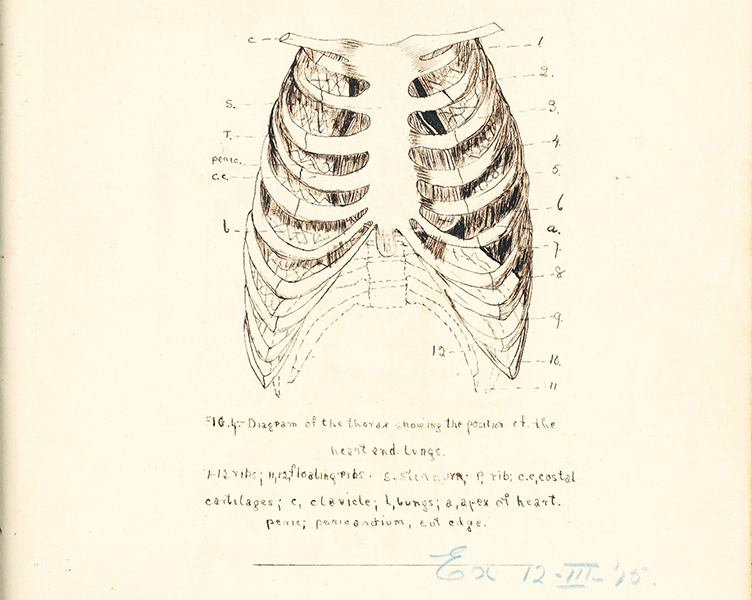
Beatrice Monteath’s 12 March, 1915 drawing


